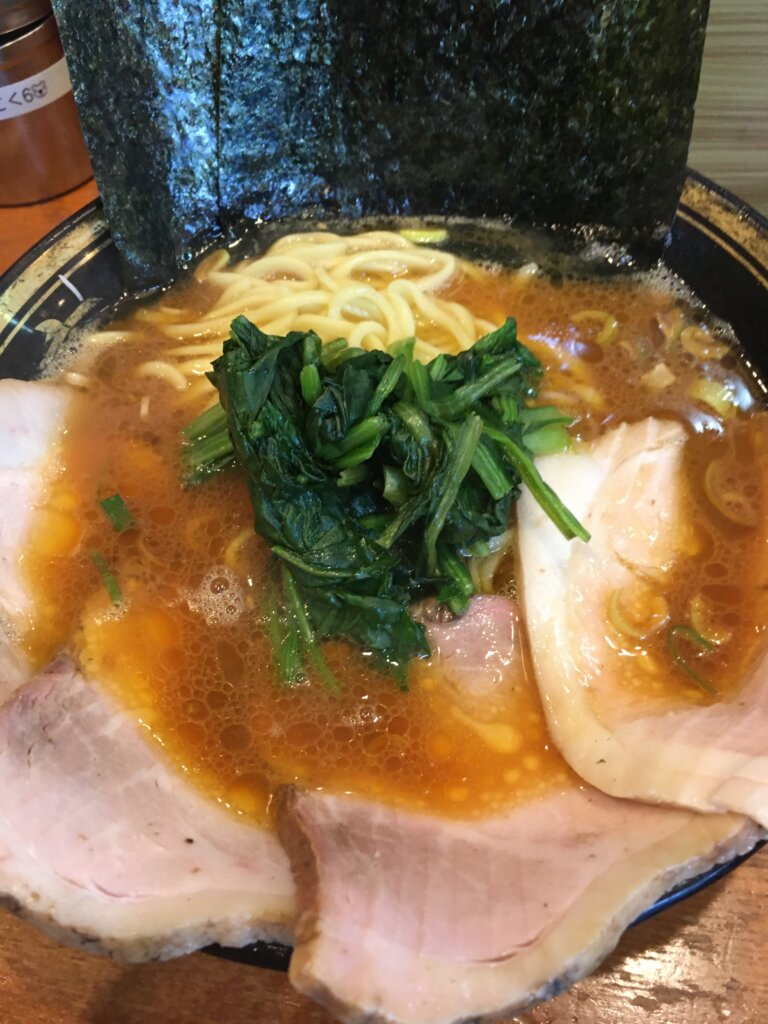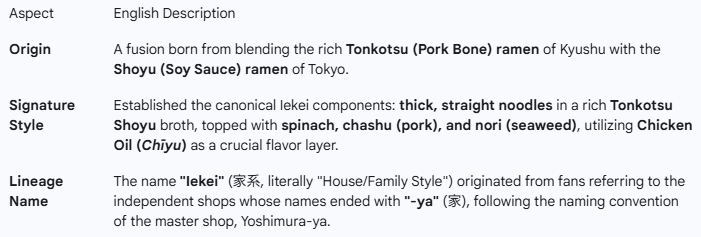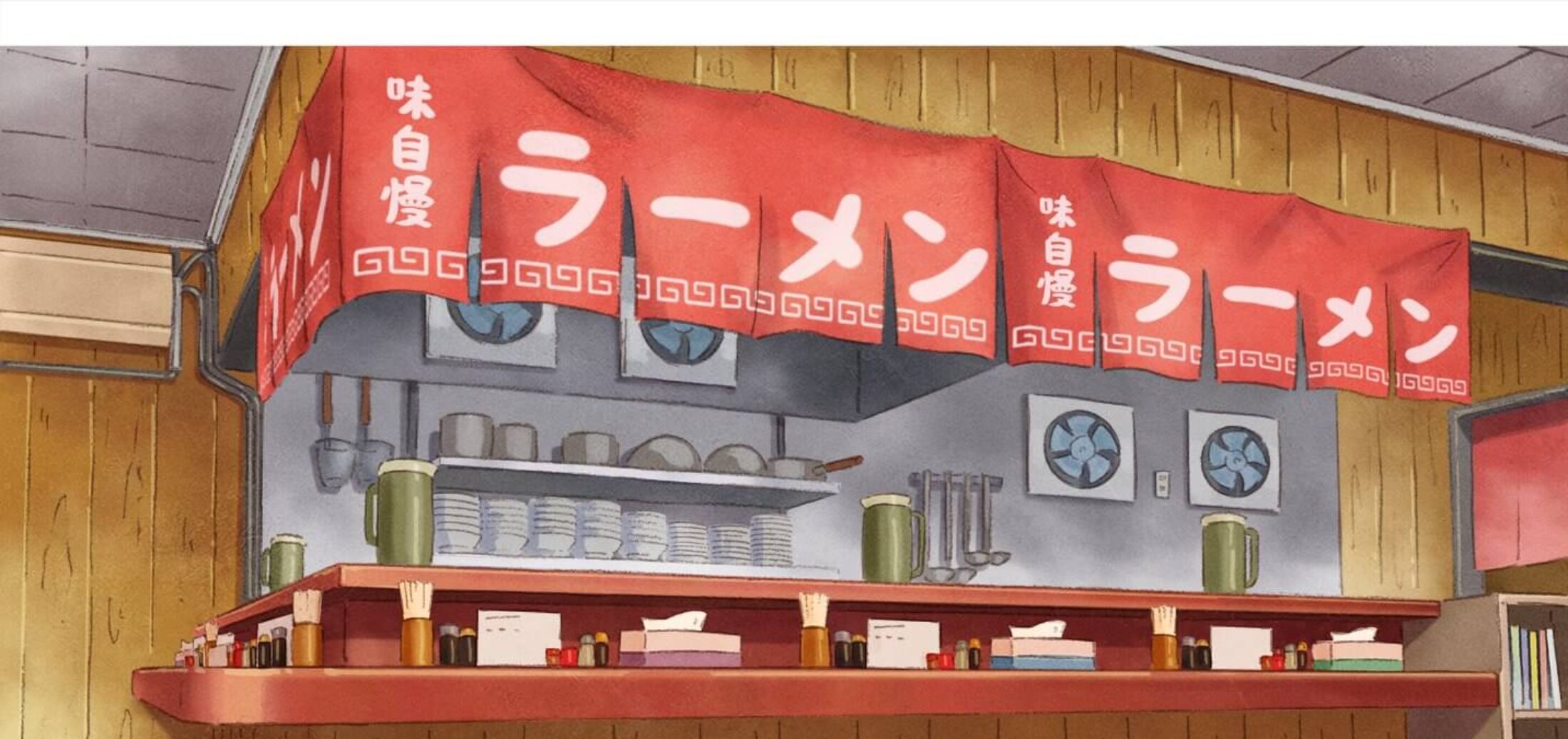
1. The Genesis: Origin and Establishment (1974~)
Iekei Ramen began in 1974 with the opening of Yoshimura-ya (吉村家) in Shinsugita, Yokohama, by founder Minoru Yoshimura.

2. The Four Major Lineages (Lineage Breakdown)
The evolution of Iekei is defined by four distinct schools that branched out from the original master.
🥇 Yoshimura-ya Direct Lineage (直系 / Chokkei)
- The Headmaster's School. These shops are officially recognized and carry the direct technical traditions handed down by Minoru Yoshimura himself.
- Flavor Profile: Highly emphasizes balance between the heavy pork bone essence and the sharp, profound Shoyu kick. The broth's "live" quality (slight variation day-to-day) is its signature.
- Key Shops: Sugitaya (杉田家), Atsugiya (厚木家), Kuan-2 Ya (環2家).
🎴 Rokkaku-ya Lineage (六角家系)
- The Classic Old-School Style. This lineage was instrumental in popularizing Iekei outside of Yokohama.
- Flavor Profile: Known for a more pronounced "animalistic" flavor (kedamono-kan) from the pork bones compared to the balanced Direct Line, prioritizing a powerful, rustic richness.
- Influence: Created unique side menus like "Cabecha" (chopped cabbage and chashu).
🍜 Shin-Nakano Musashi-ya Lineage (新中野武蔵家系)
- The Tokyo Style Pioneer. A major group that adapted the Iekei style for the Tokyo market.
- Flavor Profile: The broth is cooked intensely at high heat for a thick, heavy, and viscous consistency, maximizing the marrow extraction. The Shoyu element is slightly subdued, letting the pure Tonkotsu umami dominate.
- Legacy: Popularized the "Free Rice All Day" service, emphasizing Iekei's incredible pairing with rice.
🔥 Oudou-ya Lineage (王道家系)
The Split: Left the Direct Lineage in 2011 after controversially switching from the prescribed Sakai Seimen noodles to their own custom-made ones, pursuing their "Royal Road" (王道).
The Independent Artisans. Founded by a former Yoshimura-ya apprentice who chose technical independence.
Flavor Profile: Known for intense aged pork bone flavor and a commitment to house-made noodles (a rare feature). Signature elements include smoked chashu and an addictive, full-bodied richness.
🍜 Representative Iekei Ramen Shops in West Tokyo
・Kichijyouji Musashi-ya (closest to JR Chuo and Keio Inokashira Line Kichijyouji Station, Rokkaku-ya Lineage)
*The shop name is "Musashi-ya," which is confusing, but it is not part of the Shin-Nakano Musashi-ya Lineage.
・Ramen Pattapata (closest to JR Nambu Line Nishi-Kunitachi Station, Rokkaku-ya Lineage)
・Ramen Budouka kunigamae (closest to JR Chuo and Seibu Kokubunji Line Kokubunji Station, Shin-Nakano Musashi-ya Lineage)
